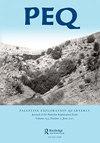The 2022 survey season at Khirbet al-Mudayna al-ʿAliya, Jordan
IF 0.8
2区 历史学
0 ARCHAEOLOGY
引用次数: 0
Abstract
This report is on the 2022 survey season at Khirbet al-Mudayna al- ‘ Aliya (KMA for short), an early Iron Age site, dating to roughly the end of the 11th/early 10th century BCE . The 2.3 ha site located in south-central Jordan was previously excavated by Bruce Routledge (University of Liverpool) over several seasons between 1994 and 2004. These excavations showed it was an Iron Age village which contained around 60 houses, in which people led seemingly regular lives (Farahani et al. 2016; Lev-Tov et al. 2011; Routledge 2000). There was little suggesting social hierarchy, long-distance trade, or other signs indicating anything other than regular Iron Age village life. That is, however, excluding the site ’ s massive forti fi cation structures. KMA is surrounded by a casemate wall, which follows the contours of the promontory the site is situated on (see Fig. 2). The only area of access to the site, from the west, is guarded by a substantial tower overlooking a dry moat. This juxtaposition of a regular village with massive forti fi cations is an enticing2022年在约旦Khirbet al- mudayna al- taaliya的调查季节
本报告是关于2022年Khirbet al-Mudayna al-Aliya(简称KMA)调查季节的,这是一个铁器时代早期的遗址,大约可以追溯到公元前11世纪末/10世纪初。这座2.3公顷的遗址位于约旦中南部,之前由布鲁斯·劳特利奇(利物浦大学)在1994年至2004年的几个赛季中挖掘。这些挖掘表明,这是一个铁器时代的村庄,有大约60栋房屋,人们在其中过着看似正常的生活(Farahani等人,2016;Lev-Tov等人,2011年;Routledge,2000年)。除了铁器时代的乡村生活之外,几乎没有任何迹象表明社会等级制度、远距离贸易或其他迹象表明有任何其他迹象。然而,这不包括该场地的大型加固结构。KMA被一堵案例墙包围,该墙遵循了该遗址所在海角的轮廓(见图2)。从西面进入该遗址的唯一区域由一座俯瞰干涸护城河的坚固塔楼守卫。将一个普通的村庄与巨大的防御工事并置是一个诱人的选择
本文章由计算机程序翻译,如有差异,请以英文原文为准。
求助全文
约1分钟内获得全文
求助全文

 求助内容:
求助内容: 应助结果提醒方式:
应助结果提醒方式:


